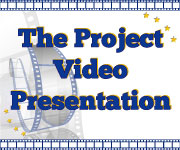basic information
THE INITIATIVE PROMOTER’S PERSPECTIVE
There was no intention to make a project such as, but the language teachers shared and utilized the teaching methods and approaches that joining to the EU offered.
The theme of the project was to offer international education related to language learning for pupils in the countryside. The main target group of the project was boys who were inspired to learn Swedish language and to create international relationships between pupils in different schools and in different countries.
The objectives of the project were to promote and animate language learning, to remove negative attitudes and to create direct international contacts for young people in the countryside.
There were several projects carried out from 1996 till 2000, before the application for the ELL:
- Comenius / Sokrates: JEP project (1997-1999) in which a common musical was created between a Hungarian and a Finnish school class during a period of two weeks.
- Interreg project of three years between a Swedish and a Finnish class. The pupils explored common and different features between Sweden and Finland, e.g. Lapland in Sweden and in Finland, forests, the memories of the Second World War, introduction to the countries’ culture and history by seven visits (like circuits Skelleftå-Vaasa- Helsinki-Turku- Tukholma- Upsala- Sundsvall-Skellefteå, and a camp in the Lapland in Sweden), by many group works on different topics - with an ending of project work presentations in a ferry. Moreover, a two-year Swedish language course for parents for organized.
- A student exchange for the pupils in Närpiö, Finland was carried out. The pupils of the last grade in the comprehensive school (at the age of 15 years) had the possibility to have an exchange period of one week in a Swedishspeaking school and vice versa the Swedish speaking students could come to study Finnish in our school. There were opportunities for on the job learning periods and for summer jobs as well as the cooperation and mutual visits between the municipalities took place, and is still an ongoing activity.
- Student exchanges with the school in Koeru in Estonia, which is a twin city with us. This activity is still ongoing.
- An Internet course to support language studies offered as an optional course ( at that time there was no read- made material available)
The project and it’sresult’s were evaluated by the school’s teachers and via the final reports to the offices and bodies that were responsible for the financing.
The outcomes of the project were a video of the musical that the pupils produced, a booklet about the pupil’s grandparents’ memories of the Second World War in Swedish and an exhibition of the customs of the Saami people. The student exchange with Närpiö is still going on. There has been about 400 pupils in exchange during the last 20 years, and the cooperation between the teachers in each school still goes on via many new projects. The cooperation with Koeru still goes on.
A two year-long Swedish course for the students’ parents was created for the use of the Training Institution. The cooperation between parents and the institution was very intensive and the project work has been going on by personal and individual relationships and commitments.
We had a feeling that we had done a lot of different kind of development wrok for language teaching. We were inspired to apply for the label by another Finnish partner in the Interreg-funded project.
We got a great opprtunity for disseminating our project results, and now the work is going on.
There was no real impact of the label on the project itself, but the recognition of a good work given to the language teachers was very supportive, especially when thinking of their work and motivation. The work of good quality on language teaching continues still as good as it was already before the awarding of the label..
It would cost very little to make use out of the cooperation with the Swedish speaking schools, student exchange etc. It is also recommended to apply for funding project work from the Swedish speaking associations in Finland.
Comments on this Case Studies
Date: 2014.10.09
Posted by Mark Fowler (Ireland)
Message: Good example of how language learning can serve as a means to remove prejudice
